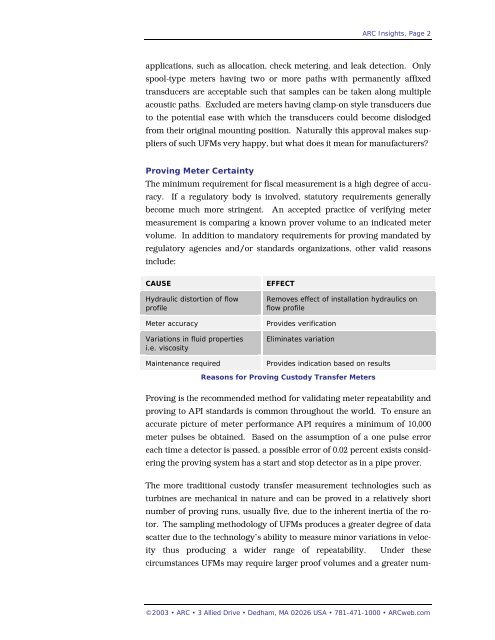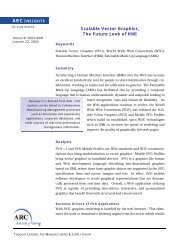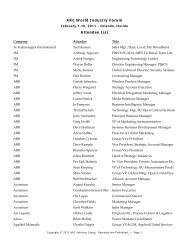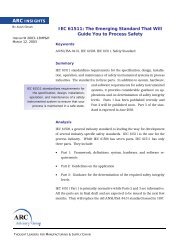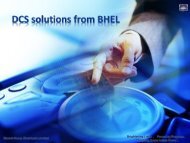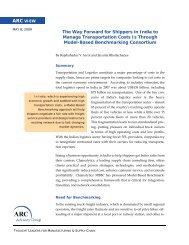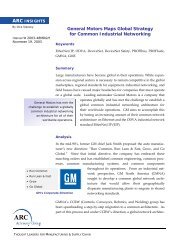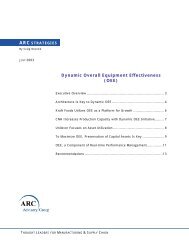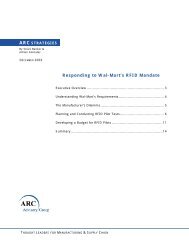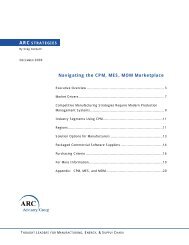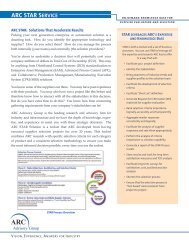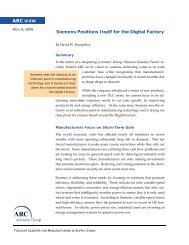Ultrasonic Flowmeters for Liquid Hydrocarbon Custody Transfer ...
Ultrasonic Flowmeters for Liquid Hydrocarbon Custody Transfer ...
Ultrasonic Flowmeters for Liquid Hydrocarbon Custody Transfer ...
Create successful ePaper yourself
Turn your PDF publications into a flip-book with our unique Google optimized e-Paper software.
ARC Insights, Page 2<br />
applications, such as allocation, check metering, and leak detection. Only<br />
spool-type meters having two or more paths with permanently affixed<br />
transducers are acceptable such that samples can be taken along multiple<br />
acoustic paths. Excluded are meters having clamp-on style transducers due<br />
to the potential ease with which the transducers could become dislodged<br />
from their original mounting position. Naturally this approval makes suppliers<br />
of such UFMs very happy, but what does it mean <strong>for</strong> manufacturers?<br />
Proving Meter Certainty<br />
The minimum requirement <strong>for</strong> fiscal measurement is a high degree of accuracy.<br />
If a regulatory body is involved, statutory requirements generally<br />
become much more stringent. An accepted practice of verifying meter<br />
measurement is comparing a known prover volume to an indicated meter<br />
volume. In addition to mandatory requirements <strong>for</strong> proving mandated by<br />
regulatory agencies and/or standards organizations, other valid reasons<br />
include:<br />
CAUSE<br />
Hydraulic distortion of flow<br />
profile<br />
Meter accuracy<br />
Variations in fluid properties<br />
i.e. viscosity<br />
Maintenance required<br />
EFFECT<br />
Removes effect of installation hydraulics on<br />
flow profile<br />
Provides verification<br />
Eliminates variation<br />
Provides indication based on results<br />
Reasons <strong>for</strong> Proving <strong>Custody</strong> <strong>Transfer</strong> Meters<br />
Proving is the recommended method <strong>for</strong> validating meter repeatability and<br />
proving to API standards is common throughout the world. To ensure an<br />
accurate picture of meter per<strong>for</strong>mance API requires a minimum of 10,000<br />
meter pulses be obtained. Based on the assumption of a one pulse error<br />
each time a detector is passed, a possible error of 0.02 percent exists considering<br />
the proving system has a start and stop detector as in a pipe prover.<br />
The more traditional custody transfer measurement technologies such as<br />
turbines are mechanical in nature and can be proved in a relatively short<br />
number of proving runs, usually five, due to the inherent inertia of the rotor.<br />
The sampling methodology of UFMs produces a greater degree of data<br />
scatter due to the technology’s ability to measure minor variations in velocity<br />
thus producing a wider range of repeatability. Under these<br />
circumstances UFMs may require larger proof volumes and a greater num-<br />
©2003 • ARC • 3 Allied Drive • Dedham, MA 02026 USA • 781-471-1000 • ARCweb.com


